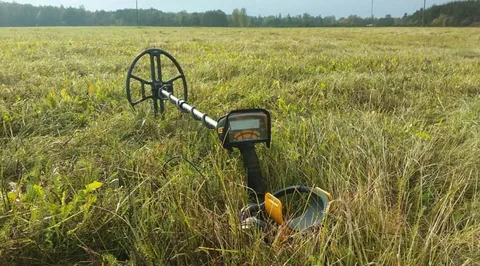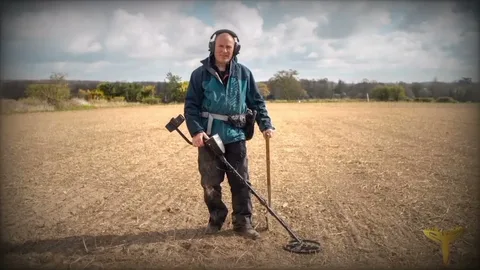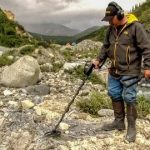Gold Rush history has always been a fascinating subject for historians, adventurers, and everyday enthusiasts alike. The thrill of discovering gold and the pursuit of wealth during the 19th-century gold rushes in various parts of the world have left a lasting legacy. In this article, we will dive into the captivating history of the Gold Rush, exploring the events, the people, and the impact of this exhilarating era. Join us as we uncover the stories and the enduring allure of the Gold Rush.
The Gold Rush was a period in the 19th century when thousands of people flocked to California in search of gold. It began in 1848 and brought about significant changes to the region, including rapid population growth and the development of new towns and cities. The fever for finding gold attracted people from all walks of life, including miners, merchants, and farmers, and had a lasting impact on the economy and culture of California. Today, the Gold Rush remains a captivating chapter in the history of the United States and continues to be studied and commemorated through various historical sites and events.
The California Gold Rush: A Historic Overview

The California Gold Rush was a significant event in American history that lasted from 1848 to 1855. It began after gold was discovered at Sutter’s Mill in January 1848, attracting thousands of people to the region in the hopes of striking it rich. The rapid influx of immigrants, known as ‘forty-niners’, led to the rapid growth of California’s population and economy.
The Gold Rush had a significant impact on California’s development, as it spurred infrastructure and urban development, as well as the establishment of law and government in the region. It also played a role in changing the demographics of California, as people from all over the United States and the world came to seek their fortunes.
The environmental impact of the California Gold Rush was also profound, as large-scale mining operations and hydraulic mining techniques wreaked havoc on the landscape, causing widespread destruction of forests and rivers.
Overall, the California Gold Rush was a transformative event that shaped the history of the American West and had lasting effects on the development of California as a state.
Untold Stories from the Klondike Gold Rush Era

Untold Stories from the Klondike Gold Rush Era refers to the often overlooked or forgotten narratives of individuals who participated in or were impacted by the Klondike Gold Rush of the late 19th century. These stories may include the experiences of Indigenous peoples, women, and people of color who were present in the region during this time but whose perspectives have been marginalized in historical accounts. These untold stories offer a more comprehensive and diverse understanding of the Gold Rush and its lasting effects on the people and communities involved.
The Impact of the Colorado Gold Rush on American History
See also: gold detector

The Colorado Gold Rush had a significant impact on American history as it played a crucial role in the westward expansion of the United States. The discovery of gold in Colorado in 1858 drew thousands of people, known as “Fifty-Niners,” to the region in search of fortune. This influx of settlers led to the rapid development of the mining industry in Colorado, as well as the establishment of numerous towns and cities in the area.
The Gold Rush also fueled the growth of the American economy, as the influx of gold and silver from Colorado helped to bolster the nation’s monetary supply. Additionally, the demand for supplies and services by the miners led to the development of industries such as agriculture, transportation, and manufacturing in the region.
Furthermore, the Colorado Gold Rush had a lasting impact on the demographic and cultural makeup of the United States. The influx of settlers, including miners, merchants, and laborers, contributed to the diversification of the American population and the expansion of the country’s western frontier. The Gold Rush also played a role in shaping the legal and political landscape of the West, as it led to the establishment of new territories and the eventual statehood of Colorado.
Overall, the Colorado Gold Rush had a profound impact on American history, contributing to the nation’s economic growth, westward expansion, and cultural development.
Lost Treasures: Tales from the Australian Gold Rush

Lost Treasures: Tales from the Australian Gold Rush is a non-fiction book that delves into the fascinating stories of the Australian gold rush era. It provides a detailed account of the people, places, and events that played a significant role in shaping this historical period. The book offers a comprehensive overview of the gold rush and highlights the struggles, triumphs, and hardships faced by those who sought their fortune in the Australian outback. It also includes captivating tales of lost treasures, mysterious disappearances, and legendary finds, making it a compelling read for history enthusiasts and adventure seekers alike.
Gold Fever: The Myth and Reality of the Alaska Gold Rush
Gold Fever: The Myth and Reality of the Alaska Gold Rush is a book that explores the frenzy and fanaticism surrounding the Klondike Gold Rush in the late 1890s. Author Claire Rudolf Murphy delves into the stories of individuals who were caught up in the gold rush, from prospectors and businessmen to Native Alaskans and women who made the treacherous journey to the Yukon in search of fortune.
The book sheds light on the harsh realities of the gold rush, including the extreme hardships and dangers faced by those who ventured north in pursuit of gold. Murphy also examines the impact of the gold rush on the environment and the indigenous people of the region.
Through meticulous research and engaging storytelling, Gold Fever provides a comprehensive look at one of the most enduring legends in American history. The book aims to dispel the myths and romanticized notions of the gold rush while presenting a more nuanced understanding of this pivotal moment in the development of the American West.
Women’s Roles in the Gold Rush: Stories of Resilience and Empowerment
Women played a significant but often overlooked role in the Gold Rush of the 19th century. While many women accompanied their husbands in the pursuit of gold, others took on non-traditional roles such as running businesses, working as cooks or laundresses, or even becoming successful miners in their own right. These women faced numerous challenges including harsh living conditions, discrimination, and lack of legal rights. However, their stories of resilience and empowerment have begun to receive more attention in recent years, highlighting the often untold history of women’s contributions to this pivotal period in American history.
Gold Rush Boomtowns: Cities That Sprang up Overnight
Gold Rush boomtowns were settlements that rapidly grew as a result of the discovery of gold in a particular area. These towns typically sprung up practically overnight as prospectors and other settlers flocked to the area in search of their fortune. The sudden influx of people led to the rapid development of infrastructure and businesses to cater to the burgeoning population.
Boomtowns were characterized by a wild, lawless atmosphere as people from all walks of life descended upon the area to try their luck at striking it rich. These towns were often filled with rowdy saloons, gambling houses, and other establishments catering to the needs of the gold seekers.
Some of the most famous Gold Rush boomtowns include places like Deadwood, South Dakota, and Virginia City, Nevada, both of which experienced rapid growth and development during the height of the Gold Rush era. While many of these towns eventually faded away as the gold reserves ran out, some managed to sustain themselves and evolve into modern-day cities.
Chinese and Indigenous Perspectives on the Gold Rush Era
Chinese perspective:
The Gold Rush era brought a significant influx of Chinese immigrants to California in the mid-19th century. Many Chinese laborers came in search of gold and economic opportunities, facing discrimination and harsh working conditions. They established Chinatowns in mining and urban areas, forming close-knit communities and contributing to the economic growth of the region. However, they also faced anti-Chinese sentiment and restrictive laws, such as the Chinese Exclusion Act of 1882, which severely limited Chinese immigration and naturalization.
Indigenous perspective:
For Indigenous peoples in California, the Gold Rush era brought significant upheaval and displacement. The influx of settlers and miners led to the loss of traditional lands, destruction of natural resources, and violent conflicts. Indigenous communities were forcibly removed from their ancestral territories and faced devastating impacts on their cultures and ways of life. Many Indigenous people were marginalized and exploited during this period, and their experiences have had long-lasting effects on their communities and cultural heritage.
Environmental Consequences of the Global Gold Rush Phenomenon
The global gold rush phenomenon has led to severe environmental consequences. Large-scale mining operations often involve the use of harmful chemicals such as cyanide and mercury, which can leak into nearby waterways and cause significant damage to aquatic ecosystems. Deforestation and habitat destruction are also common as mining companies clear land for their operations, leading to the loss of biodiversity and disruption of local ecosystems. Additionally, the process of extracting gold can result in the release of large amounts of carbon dioxide and other greenhouse gases, contributing to climate change. Overall, the global gold rush has had a detrimental impact on the environment, and efforts must be made to mitigate these consequences.
The Legacy of Gold Rush History: Lessons for the Modern World
The Legacy of Gold Rush History: Lessons for the Modern World is a collection of essays that explore the impact of the 19th century Gold Rush on the development of modern economies, societies, and cultures. The book delves into the lasting effects of the Gold Rush on issues such as immigration, environmental conservation, and economic inequality. It also examines how the Gold Rush serves as a valuable case study for understanding the complexities of resource extraction and the relationships between local communities and global markets. Overall, the book offers valuable insights into the historical and contemporary implications of the Gold Rush, making it a valuable resource for students, scholars, and anyone interested in understanding the lasting impact of this pivotal moment in history.









